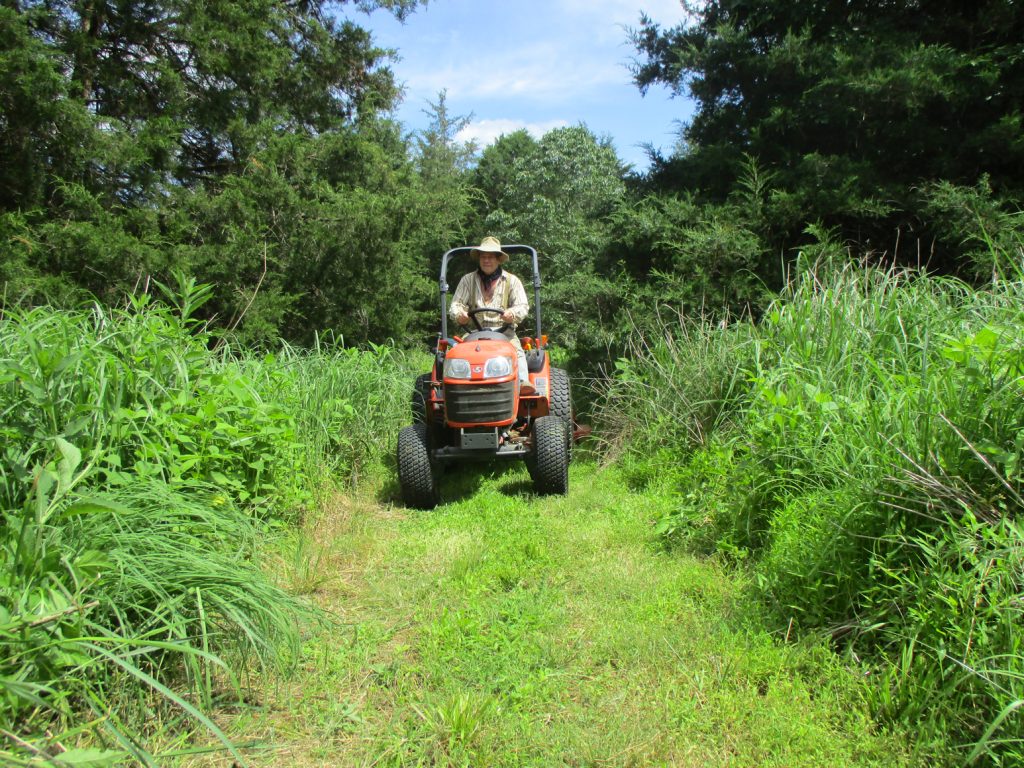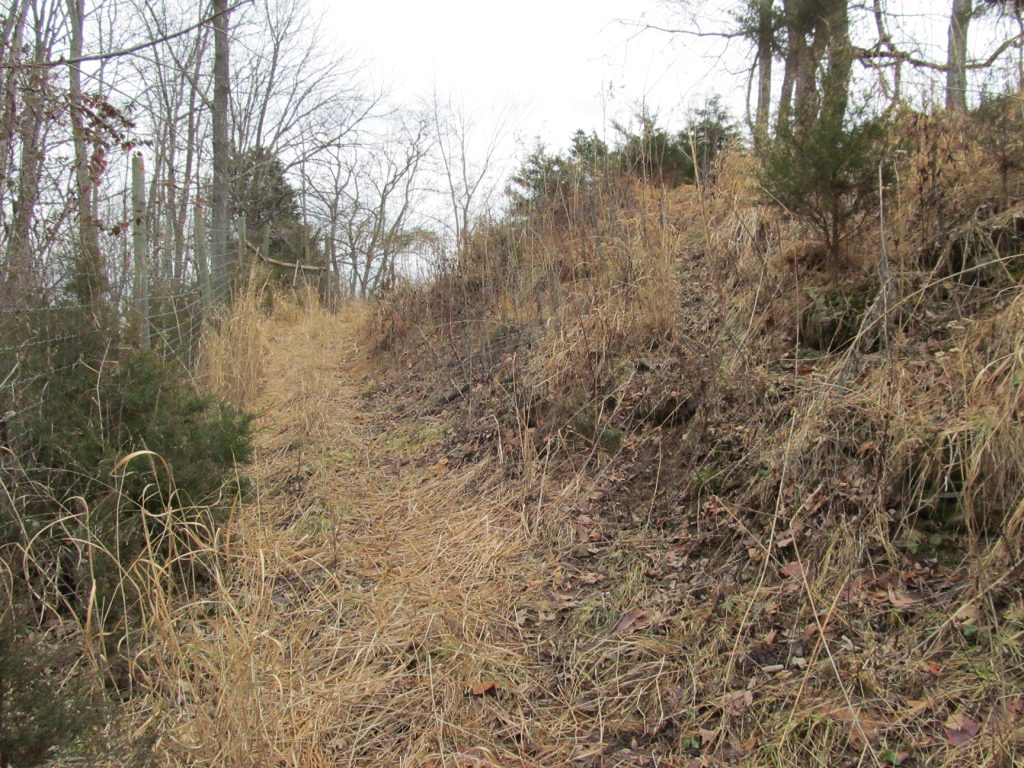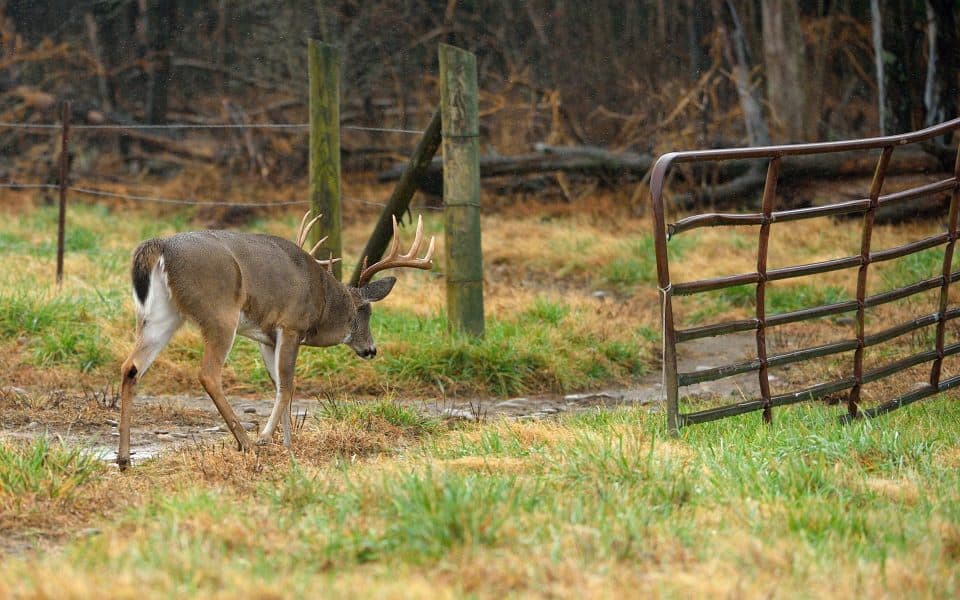When whitetail breeding season arrives (from October through early December for most of the country) bucks are on the move more than any other time of year. If you had to choose a single hunting tactic for this productive period of the rut, it would be hard to beat “watching funnels.”
What Is a Funnel
It’s simple enough to a whitetail hunter, “funnels” are basically any location where a “deer’s travel options are channeled into fewer choices or a narrower path.” They are typically created by three major structure types — vegetation, topography, or manmade.
No matter whether you call it a bottleneck, corridor or funnel, when their movement is restricted to a smaller zone, not only will you usually see increased traffic, it also tends to be easier to play the wind. It’s important to know which bottlenecks that mature bucks will be favoring during different times of the season or under different conditions.
It’s important to realize that bucks don’t just chase females non-stop during the rut. They also eat, bed, and seek out non-pressured areas away from humans. So it’s important to ask ourselves: Will they be heading towards food, returning to a bedding area, escaping hunting pressure, or actually searching for does as the as the breeding urge begins.
Vegetation Funnels
A classic funnel created by vegetation might consist of a strip of shrubs, vines, and saplings that offers cover as a buck works between different doe groups during the rut. Instead of exposing himself by trekking across open areas, whitetails tend to take the most inconspicuous, yet easiest route at their disposal.
The dense plant growth provides security/ escape-cover through a more open, exposed area. Another example would be a narrow row of trees connecting two agricultural fields or clear-cut areas.
A common vegetation funnel in farmland is a low area bisecting a field that is too wet to cultivate and grows up in native plants.
Another variety of vegetation funnel occurs where plant growth is so thick and dense that it is hard for deer to travel through and channels their movement along its edge. This might be a linear thicket or hedgerow that is so overgrown in briars and dense weeds and brush that a deer can’t walk through it. It creates an obstacle that channels deer movement along the edge of it as they travel the path of least resistance. Windstorm damaged areas create prime examples of this type of funnel. Deer will channel along the edge, unable to easily walk through the jumbled mass of blowdowns, but wanting to stay near the cover for security and to reduce their visibility to predators.
Topography Funnels

Gerald Almy
A second type of funnel to look for is based on topography. These types of funnels come in many variations.
A ridge is somewhat of a funnel in the way deer will travel along its crest. Sure, they could travel different areas of the ridge, and sometimes do, but they prefer to travel the easiest route and the path that offers them the best vantage to use the wind and thermal currents.
Benches just below the ridge that parallel it are even more productive funnels for older-age bucks because the animals aren’t silhouetted and exposed there like they are on top of the ridge.
Saddles can be extremely productive, since bucks use these to move from one side of a ridge to the other. A side spur angling down off a major ridge is another topography funnel, used by whitetails moving to lower terrain.
Drainages, hollows and gullies in hilly or mountainous terrain also serve as funnels, channeling buck movement up and down. A typical pattern is down to feed in evenings, and up to bed high in mornings.
A cliff or sheer, steep terrain can also funnel deer along a route below or above it where traveling is easier. Even though a buck can scamper up very sharp inclines, unless forced to, he’d rather take a less strenuous route in most cases.
In more flat country, ditches or depressions can be major funnels. These low areas offer a way for bucks to travel through more open terrain without being exposed. Walking in the ditch keeps the buck less visible.
River or stream edges are other topographic funnels. Bucks tend to follow the natural contours and travel along these flowages, rather than cross them. And when they do cross, it’s typically at a riffle or shallow area, narrowing their movement even further down to that specific spot.
Swamps are also topography-based funnels. Yes, deer can wade through these wet areas and sometimes do, but mostly they’ll skirt the edges of swamps in their travels unless pressured, making them prime rut funnels.
Manmade Funnels

Gerald Almy
The third type of funnel is created by humans. These can be things such as powerlines, which deer often travel parallel to, or highways, which they usually won’t cross if they can avoid it.
The most common manmade funnel is created by fences. Deer can easily jump fences. Leonard Rue has photographed deer leaping over 9-foot fences…but they don’t like to. They will often travel along the fence instead of hurdling it, especially if there is a gate, low spot or way to get under it nearby.
With fences you can easily create a crossing point by lowering the top strand of wire or simply leaving a gate open. Whitetails become accustomed to these spots and they tend to grow better the longer they are traversable.
A final manmade type of funnel is one more and more landowners are using to channel deer movement around their stands. These are intentionally created by felled trees, hinge-cut trees, piled up brush, or paths cut through thickets. They are created with the express purpose of narrowing the deer’s travel options and encouraging movement past the hunter’s stand, or away from downwind of the ambush site. A mowed strip through a brushy thicket or tall grass field is a prime example.
Aside from the man-made options, many of these funnels can be located on either topographic maps or aerial photos. It always pays to do as much advance research as you can, then put in the fieldwork to investigate those you have located, as well as discovering others that may not show up on a map. Also, confirm that they are being used by finding fresh sign such as large tracks, rubs, and scrapes, and monitoring them with trail cameras.
Rut Phase Funnel Planner
Now let’s get specific about which funnels to hunt during the different rut phases. Biologists and outdoor writers have opined different ways to break down the mating period, but I’ve found four distinct phases in my 45 years of studying and hunting whitetails: the early pre-rut, the seek-and-chase phase, peak breeding (lockdown), and post rut. The rest of this article uses the time frame for these four phases for most of the country, excluding parts of Texas and the deep South.
Early Pre-Rut
During the early pre-rut, (mid to late October, or even into early November depending on your location), mature bucks are discreetly holding back from pursuing does, even though testosterone levels are rising and nights are cooling. But they are beginning to investigate doe living areas, which they have mostly stayed out of during the summer.
Search for funnels along the edges of their core home range where it juts up against doe territory. Bucks will cruise the edges of these “softer” doe areas, searching for the first doe that will come into heat.
Focus should also be put on bed-to-feed funnels, since packing on weight is still a priority during this time.
Seek-and-Chase Phase
During the seek-and-chase phase (usually the last few days in October through the first week or two in November), testosterone levels are peaking and does are showing the signs they will soon be ready to breed. Bucks will now spend more time cruising the doe/fawn areas.

Gerald Almy
They’ll devote much of this phase to moving from one doe family group to another. But as experienced whitetail hunters know, mature bucks don’t just charge headlong from herd to herd using the most direct path – only youngsters tend to do that. Instead, they take more circuitous routes that provide cover and keep them hidden as they travel between these areas to scent-check the readiness of various female groups.
Look for vegetation and topography funnels that offer cover to these breeding age bucks to move between different doe groups. Hot funnels can include gullies, saddles, hollows, ditches, strips of brush in open woods, and low ditches in fields.
Getting there quickly isn’t their only goal – getting there and staying alive trumps all. Activity is at its most intense during this rut stage and sitting on a prime funnel all day is a killer tactic. This is also a great time to encounter a “traveler” buck making an excursion out of his core home range into your territory.
Peak Breeding
For most areas, peak breeding will occur during mid-November – again, depending upon your location north to south, and may stretch until the end of the month. During peak rut you won’t see as much funnel activity. Dominant bucks are hooked up with does and simply not moving as much. However, after they finish with one, they quickly begin the search for another, making those same funnels described above still productive. Just expect longer dead periods between buck appearances.
Another spot to focus on would be short connecting funnels leading from doe areas to the nearest high-quality food source. Does typically bed close to the best food available. Any buck that isn’t already “locked down” with a receptive doe will troll these short funnels looking for females heading to food, especially late in the afternoon.
Finally, if this period corresponds with the opening of rifle season and you hunt public or high-pressure areas, check out funnels leading to thick escape cover. This will sometimes be the buck’s core home range; other times satellite security areas on the fringe of their range which they flee to as hunting pressure intensifies.
Post-rut
As the main rut winds down in late November, a few does may not have conceived. To find them, bucks will once again begin visiting and reactivating scrapes, which they largely ignored during peak breeding. Hunt vegetation and topography funnels that lead to and connect these scrape areas along the edges of doe territory, but in patches of cover where they’ll still feel secure.
Often during this time some mature bucks may head back to their thick core summer range to recuperate for a few days. But after a brief rest, they’ll typically rouse themselves to make a few more rounds to find those last few un-bred females. Search out travel corridor funnels leading from their core hideouts to these areas.
As the final post-rut phase winds down and testosterone levels decline, focus on yet a different type of funnel. Now concentrate on pinch-points between bedding and primary food sources.
Funnels following a strip of thick brush, overgrown ditch, or hollow that lead from their bedding cover to isolated food sources where they’ll nibble on thickets of greenbrier, laurel, brambles, honeysuckle, plum, hemlock, and other remote late season foods, can be especially productive as they try to recover some of the weight and fat they lost during the rut. Now, as the calendar flips over to the final month of the year, finding food and surviving begin to outweigh breeding as their top priority.
Finally, if you can’t locate a point where a broad funnel narrows into a tighter stricture point, make one. Find the optimum location for a tree stand or ground blind. Then fell a few low-value trees or drag in some cut trees to block a portion of their travel corridor to channel deer closer, into good bow or gun range of that site. Just a bit of low-impact habitat manipulation can create the ultimate “funnel sweet spot” in these situations where one may be lacking.
Join our weekly newsletter or subscribe to GameKeepers Magazine.
Your source for information, equipment, know-how, deals and discounts to help you get the most from every hard-earned moment in the field.









